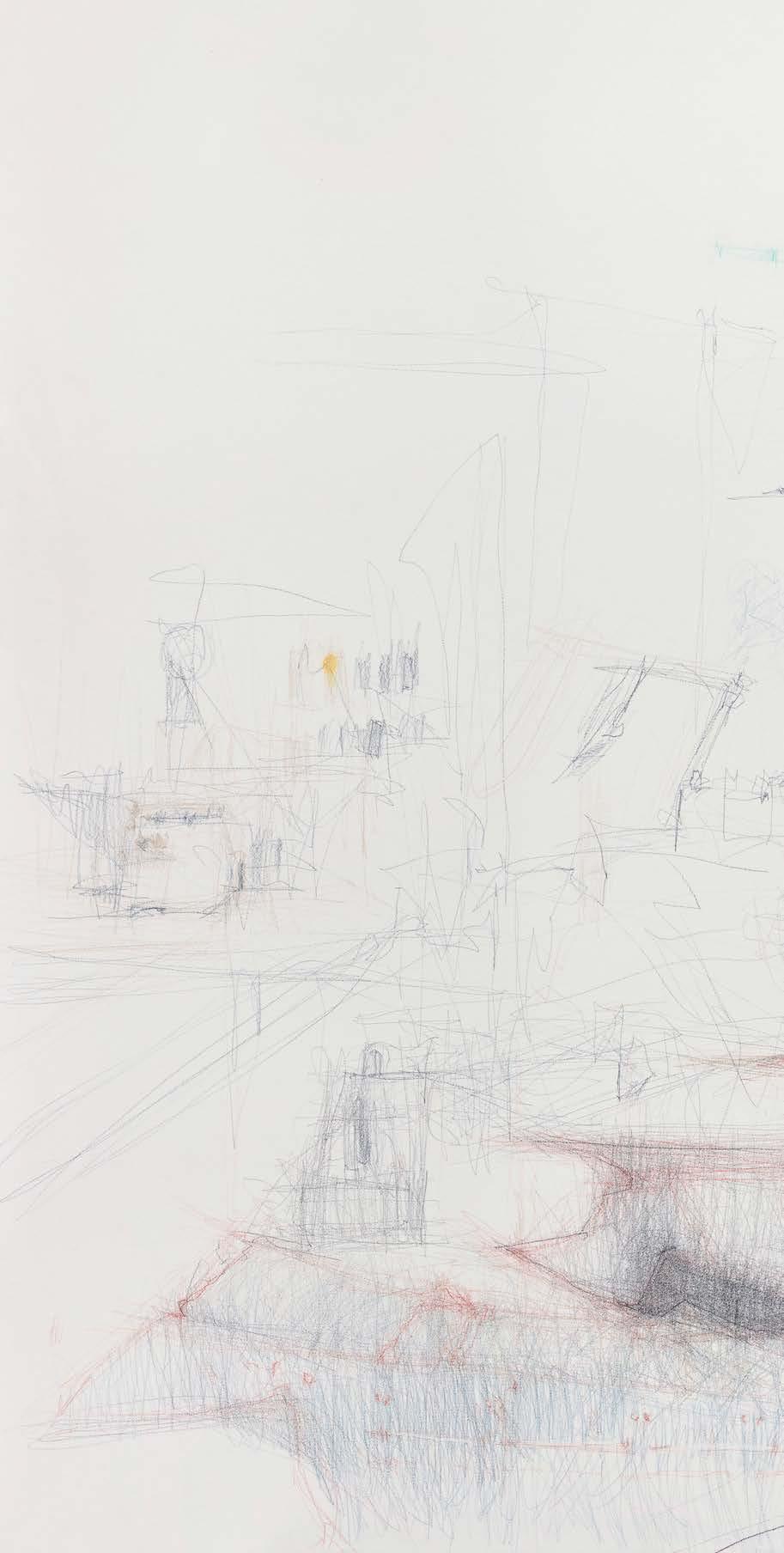


















 House of Negroni’s Master Key, ballpoint pen, 30x30cm
House of Negroni’s Master Key, ballpoint pen, 30x30cm




















 House of Negroni’s Master Key, ballpoint pen, 30x30cm
House of Negroni’s Master Key, ballpoint pen, 30x30cm
This French artist creates intricate drawings from the dining table in his Bordeaux apartment, with the unassuming ballpoint. Ramsha Vistro finds out more ▸

Art and creativity are in Kate CorbettWinder’s gene pool: her grandmother was an artist who trained at Slade and her grandfather, a writer, was also a keen painter who encouraged her to paint as she grew up. At her secondary school, she was lucky to find an incredibly inspiring art master, Robin Child, now an octogenarian, who is still teaching in Devon and whom she still tries to see once a year for a course. “It gives me a reboot and a fresh way of looking again. It’s like a blast of premium art petrol!” she laughs.
Corbett-Winder initially studied fashion and journalism, working at Vogue in the eighties, before moving to her husband’s family estate – Vaynor Park – in mid-Wales where she began painting.
“Unless the fashion is of the best of its kind – cut exquisitely from the most beautiful materials – it doesn’t last, whereas a great painting endures forever,” she comments. Widely known for her delightful landscapes and floral paintings (she is an avid and passionate gardener whilst her daughter is Willow Crossley, the internationally renowned florist, designer and author), Corbett-Winder has recently begun to explore a more abstract side to her work, inspired by the works of Ivon Hitchens and others, marking a distinct and exciting new direction in her painting. Corbett-Winder’s studio is nestled within the beautiful gardens of Vaynor Park, where she draws inspiration, often sketching various aspects of the Welsh landscape, before retreating into her studio to paint the final picture. ▸

 Vaynor, oil on board, 20x38cm
Vaynor, oil on board, 20x38cm
The National Theatre’s very first Artist in Residence talks to Niki Browes about his new exhibition, CURTIS HOLDER : The Makers. Portraits from Backstage, celebrating those behind the red curtain ▸


 The Costume Maker, coloured pencil and acrylic gouache on paper, 120x150cm
The Costume Maker, coloured pencil and acrylic gouache on paper, 120x150cm
 Mistress and maid, 1665-67, oil on canvas
Mistress and maid, 1665-67, oil on canvas
A rare exhibition featuring 28 of VERMEER ’s paintings will go on display at the Rijksmuseum in Amsterdam, and demand meant an incredible 100,000 tickets were sold before it opened. Rosalind Ormiston looks into the Dutch master’s enduring appeal ▸

9 ADD A BUD
I add more background, mainly on the top of the composition. I want to enhance the value change between the ower and the background. I use a synthetic round brush, number 14, loaded with a mix of Ultramarine Turquoise, Burnt Sienna, Sap Green, and Manganese Blue. Note that my background is not at; we still can see the white of the paper. I think that background and foreground have the same importance; they work together to enhance the whole composition so if one of them looks at, it will make for a bad composition. I also add the bud, using a mixture of New Gamboge and B urnt Sienna.
I am using a round synthetic brush, number 10, and adding a mixture of Sap Green and Green Gold to suggest stems and foliage. I finish the whole painting by adding some lines that will enhance the composition and attract the viewer’s eyes. I use a synthetic rigger brush number 1. All these lines work as calligraphic elements and will draw attention to the focal point: they are placed next to the main flower.▫
For more techniquess go to artistsandillustrators.co.uk

